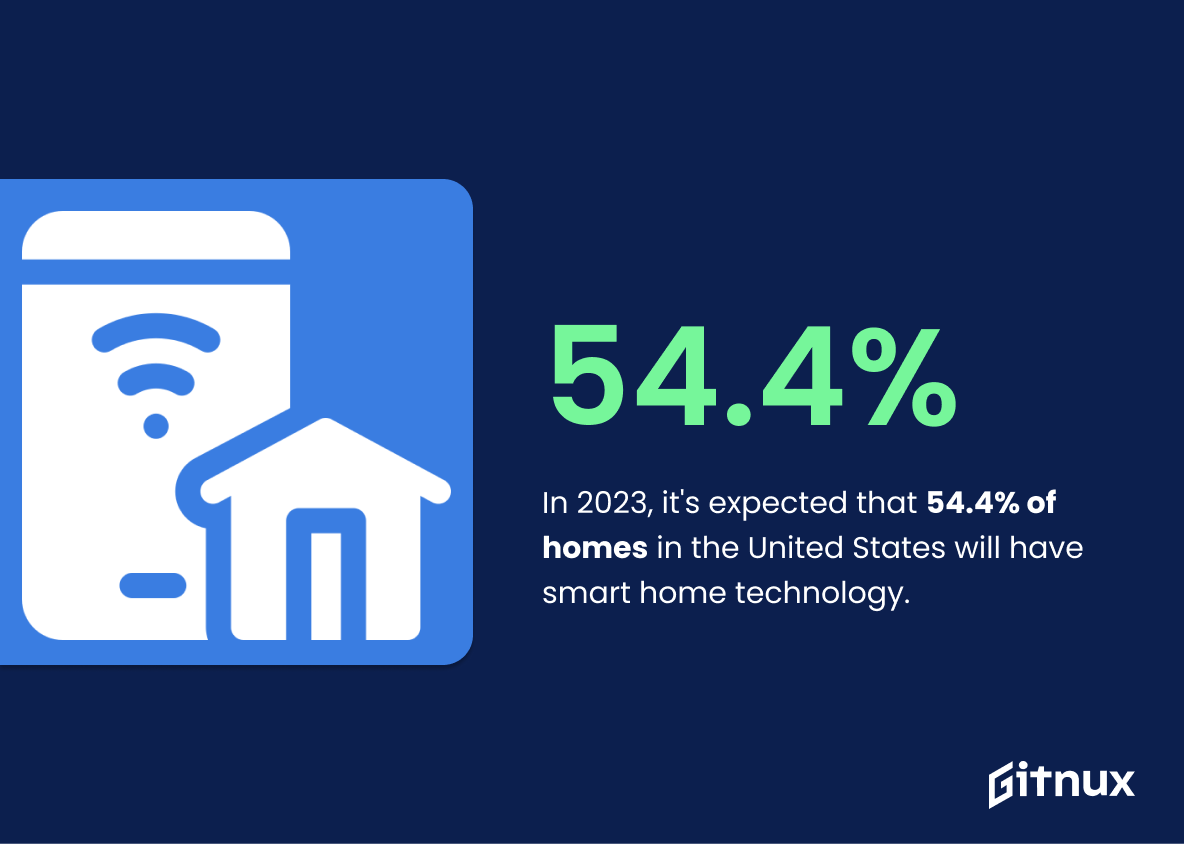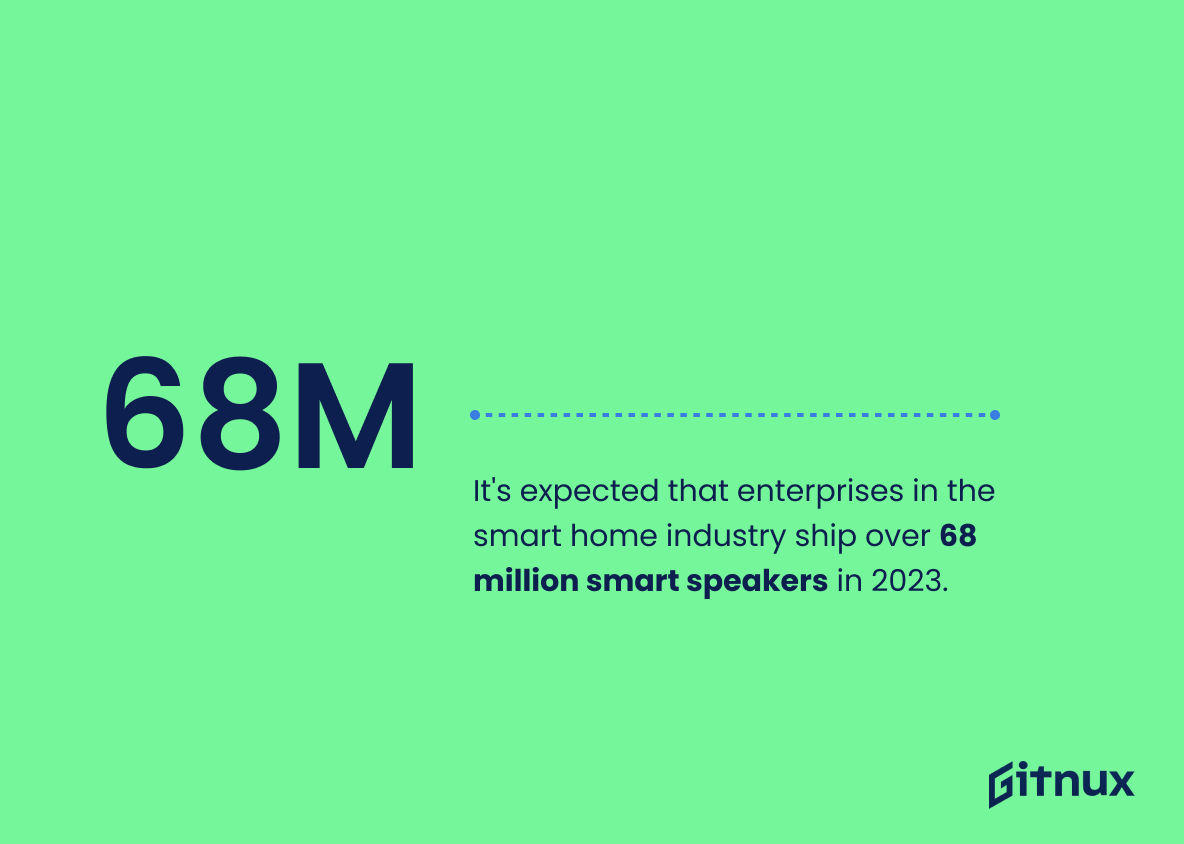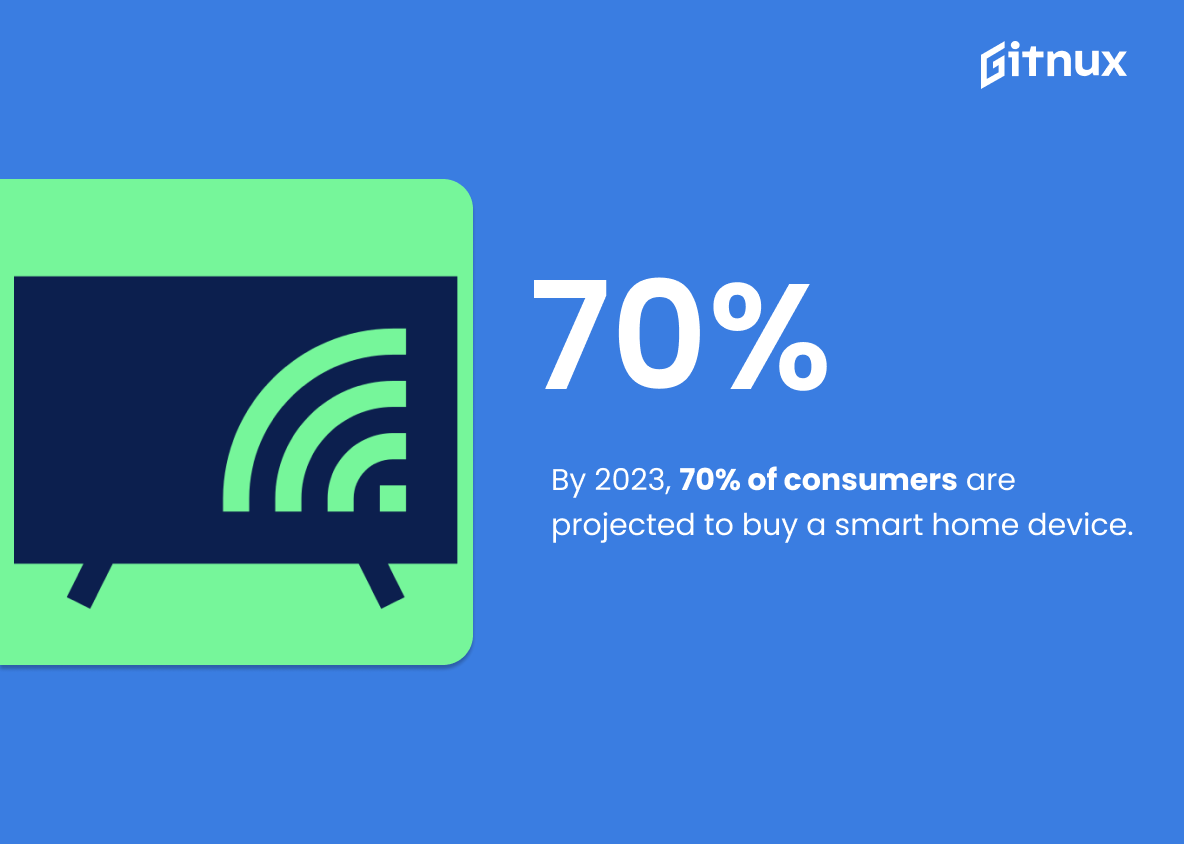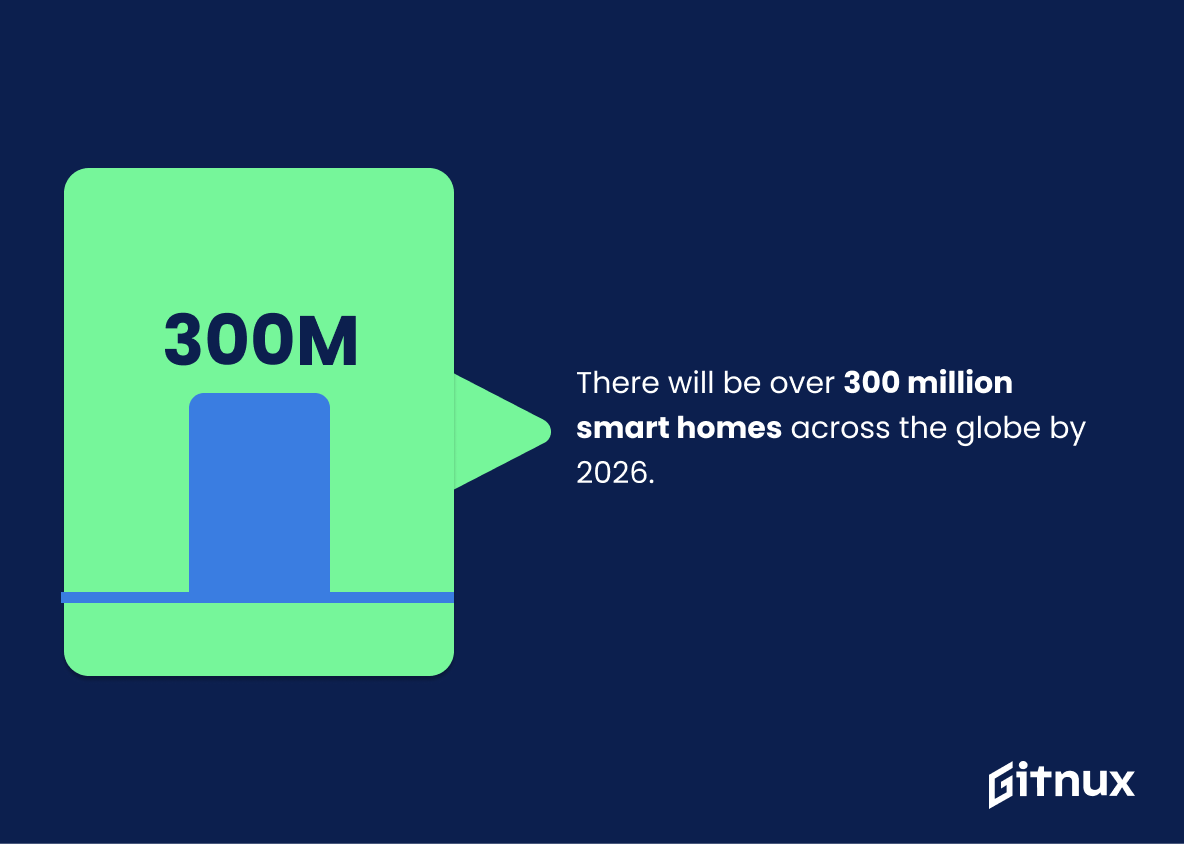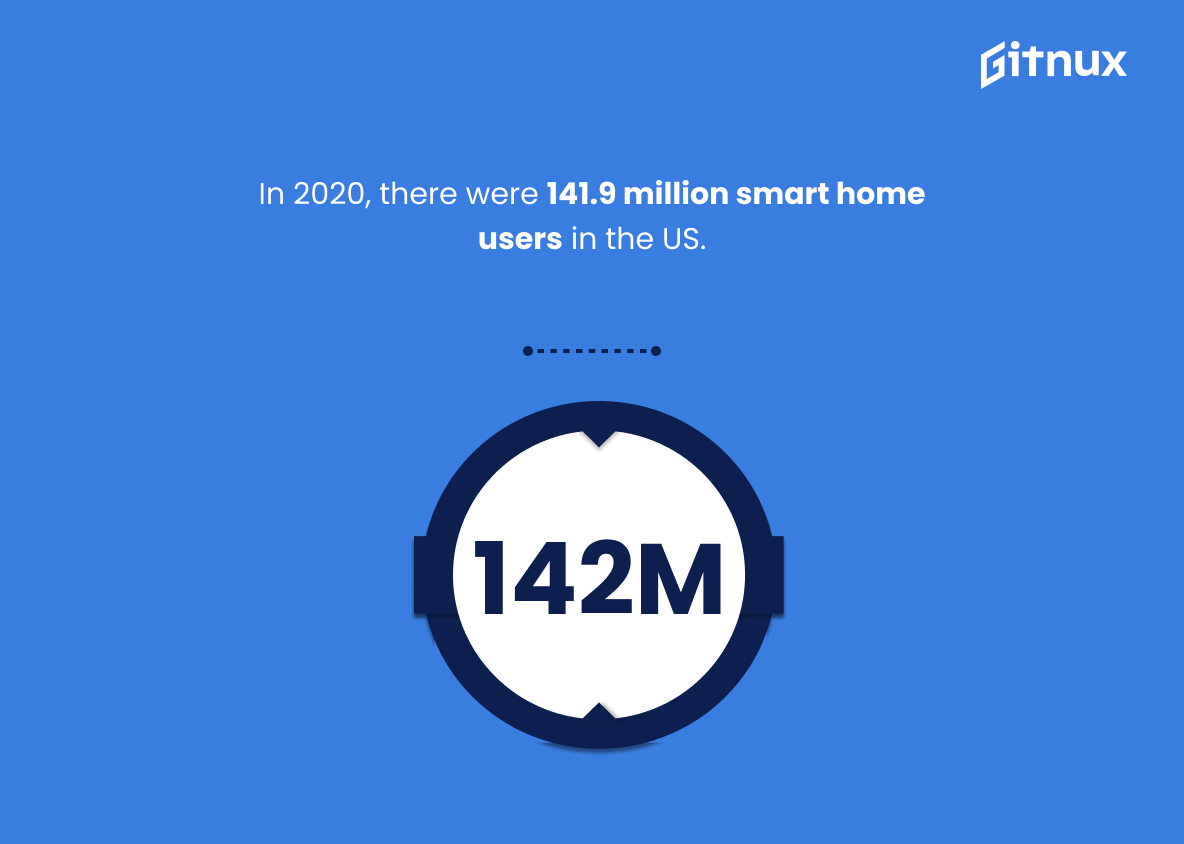In the dynamic landscape of modern urbanization, Smart Cities represent the pinnacle of innovation, integrating technology to enhance the quality of life for citizens. Distinguished by their effective interplay of digital innovation and urban infrastructure, these alluring spaces are transforming the narrative of urban life.
This blog post will delve into the fascinating world of Smart Cities, elucidating their accelerating prominence through the lens of compelling statistics. As we navigate the nuances of this digital revolution, we unravel insights into how these ultra-modern ecosystems represent the future of sustainable urban living.
The Latest Smart City Statistics Unveiled
By 2025, the global smart city market size will reach $820.7 billion, compared to $308 billion in 2018.
An undeniable reverberation in the room of Smart City Statistics would be the anticipated market size jump to a whopping $820.7 billion by 2025 from a notable $308 billion in 2018. The resonating impact of this figures highlights not only the relentless growth of the smart city industry but also points towards an accelerated global adoption.
Such a leap paints a vivid picture of future cities, laden with advanced technology and intelligent urban planning, fostering sustainable economic growth and high quality of life. The gravity of these numbers underscores the burgeoning opportunities for tech companies, investors, and city administrators that could only be ignored at one’s peril.
Singapore is currently ranked as the number one smart city in the world.
Singapore’s top-notch position as the world’s premier smart city paints an intriguing picture amid a landscape of smart city statistics. The essence of this notable ranking lies in its potent ability to reveal the cutting-edge advances in technology, infrastructure, and urban planning that have propelled Singapore into the forefront. Hence, prospective readers would definitely be captivated by Singapore’s story, finding useful insights into the potential of smart cities as well as the unprecedented growth opportunities they can present.
The implication of its number one status isn’t to be understated, serving as a beacon of inspiration, a blueprint for success, and a benchmark for excellence in the audacious pursuit of urban intelligence. This statistic, subtly woven into the fabric of our blog post, holds the ability to showcase the real and tangible transformations that smart cities can orchestrate, therefore, bringing the discussion closer to home for our audience.
60% of the world’s population is expected to live in smart cities by 2050.
A riveting revelation waiting to revolutionize our future living experiences is that 60% of the world’s populace will call smart cities their home by 2050. Drawing from this compelling statistic, we see a world being radically reshaped by technology, infrastructure, and connectivity as the essence of urban living. This implication leverages the urgency and importance of understanding, tracking, and acting on smart city trends – laying the foundation upon which the future of urban life will be built.
An enlightening figure like this can serve as a north star for architects, policymakers, urban planners, and technologists, guiding them through the uncharted territory of the future metropolis. After all, a smarter city doesn’t just mean sophisticated tech and sparkling skyscrapers, but it also calls for intelligent, empathetic, and informed individuals prepared for the urban advancements just around the bend.
55% of Americans think investing in smart city technology is a good use of taxpayer dollars.
Reflecting on the statistic that 55% of Americans perceive investing in smart city technology as a commendable use of taxpayer money, it becomes emblematic of public approval towards digital urbanization, setting the stage for a potential increase in funding and support for smart city initiatives. This number is instrumental in presenting a view of the direction American public sentiment is leaning towards with regard to the relevance and importance of smart city technology, which lays a pivotal foundation for any writing endeavor in the realm of Smart City Statistics.
Highlighting such data helps underline the magnitude of acceptance for this technology, and paints a broader picture of the citizens’ willingness to monetarily back its development and roll-out, demonstrating the perceived value and interest in advancing urban spaces to smart cities within the blog post.
By 2021, more than 73% of all connected devices will be related to smart cities.
Highlighting the prediction that by 2021, more than 73% of all connected devices will be associated with smart cities, underscores the accelerating level of integration of technology into urban life. It’s akin to reading the future skyline of the urban world, dominated not by towering structures but by a web of connected smart devices.
This numerical revelation serves as a testament to the rapid digital transformation occurring in our cities, reshaping the essence of urban life. It amplifies how crucial it becomes for stakeholders, policymakers and the public to comprehend the scale and velocity of this shift in terms of planning, infrastructure and investments for sustainable urban futures.
Delving into this high percentage further, it also hints at the rising need for advanced cyber security measures, as the urban landscape becomes more digitally connected. Moreover, it signals a nudge towards the dependency on renewable energy sources and eco-friendly practices, to ensure that this digital upsurge doesn’t infringe our planet’s health.
Furthermore, for the tech giants and start-ups alike, this figure paves new avenues for innovation, thus giving a strategic direction. From the importance of developing user-friendly apps to the design of complex Smart Home system for domestic comfort – this statistic points out where the opportunities lie.
Thus, this figure perfectly blends into a blog post on Smart City statistics, providing context, framing implications, and essentially showing readers the scale of the digital urban revolution unfolding before our eyes. It is no longer a visionary statement, but an actual countdown to a not-so-distant digital future.
Lighting is expected to be the fastest-growing application for smart cities, with a 24.4% CAGR from 2019 to 2026.
The anticipation of lighting evolving as the quickest developing application in smart cities, fueled by a 24.4% compound annual growth rate (CAGR) from 2019 to 2026, serves as a bright beacon in our exploration of Smart City Statistics. The compelling nature of this data is not just a standalone figure, rather it shines a light on several underlying facets that are reshaping our urban landscapes.
Firstly, it underscores the progressive pace at which technology is impacting everyday life. As cities become smarter, it’s evident that there’s an increasing preference for intelligent solutions – such as energy-efficient, automated and responsive lighting systems.
Alternatively, at a more profound level, it resonates with the urgent quest for sustainability, as efficient lighting directly contributes to energy conservation. It emphasizes how rapidly advancing technology, coupled with conscious efforts towards sustainable urbanization, is influencing the way our cities are constructed or modified.
Lastly, it exemplifies the commercial viability of smart city innovations. A CAGR of 24.4% is a clear indication that the market is ripe for such developments, and there’s a robust economic potential waiting to be tapped.
In the bigger picture of smart city statistics, this figure acts as a vibrant prism, refracting larger narratives around technological advancements, sustainability, and market potential. It’s more than just a forecast; it’s a brilliantly illuminated signpost pointing toward the significant confluence of sustainability and technology in our cities’ future.
In Europe, Amsterdam is the city with the most smart city initiatives (170 projects).
Peering into the technological crystal ball of Europe, one can’t help but marvel at the Dutch metropolis of Amsterdam, leading the charge with a staggering 170 smart city initiatives. This nugget of knowledge serves as testament to Amsterdam’s dedication towards innovating urban life through modern solutions – an essential cornerstone for a blog post spotlighting Smart City Statistics.
This numeric tidbit clearly underscores the city’s triumphant stride in transforming into a digitally smart future, acting as an eye-opening indication of how possible it is to breathe digital intelligence into the core of urban living. Delving deeper into this statistic offers a unique opportunity to understand the depth of Amsterdam’s commitment and ambition, and extrapolate what could potentially transpire if other cities follow suit. Certainly, any review of such progressive statistics can’t be complete without mentioning this one.
66% of US cities are investing in smart city technology.
Illuminating the pathway towards a technologically advanced society, an intriguing 66% representation of US cities are embracing smart city technology. This statistic exemplifies the sweeping momentum of digital transformation. By embedding smart tech infrastructure, these cities are not only revolutionizing urban living but also setting new trends for sustainability, efficiency, and modernization.
Hence, this statistic is a powerful testament to the rising prevalence and critical importance of smart city technology in shaping future urban landscapes. A beacon of inspiration for other cities, this draws an evocative picture for any blog post aimed at shining a light on Smart City Statistics.
China plans to build 500 smart cities.
In the vibrant tapestry of Smart City Statistics, the ambitious plan of China to construct a staggering 500 smart cities creates a radiant thread that ushers in an era of high-tech urban living. This notable undertaking establishes not only the magnitude of China’s commitment to revolutionizing their urban spaces, but also highlights a global trend towards leveraging technology for sustainable city development.
It becomes a symbol of important global progress, a benchmark against which other countries might measure their own strides in the smart city arena. To consider this in a blog post would not only present China’s advanced position in this field but also underscore the expansive potential and scale of the smart city movement worldwide.
US municipalities are forecast to spend up to $41 billion on smart city initiatives in 2020.
Drawing focus to an astounding figure, ‘US municipalities are projected to invest an enormous $41 billion on smart city initiatives in 2020,’ crystallizes the mammoth scale of investment intended for these futuristic urban infrastructures. It underlines the acute interest and commitment from city authorities while emphasizing the impetus and momentum driving this technological revolution towards ultra-modern, efficient, and smarter cities.
This tangible financial injection, a striking highlight in any smart city statistics study, encapsulates the profound economic impact, the clear willingness to support major technological advancements, and the commitment to a sustainably progressive urban future. Ultimately, this figure serves as a clear testimony to the growing significance of smart cities in the tapestry of American urban life.
The Asia-Pacific smart city spending is forecasted to reach $28.3 billion in 2022.
Anticipating a dramatic surge, the Asia-Pacific region is projected to pump a whopping $28.3 billion into smart city initiatives by 2022. This high-stakes wealth funneling greatly underlines its commitment to adopt hi-tech solutions for urban areas.
Peering through the lens of Smart City statistics, this revelation illustrates the accelerated momentum of technological progress within Asia-Pacific metropoles, exerting gravitational force on the dialogue, strategy, and evolution of smart city development worldwide. Quite impressively, these figures reveal the region’s eager stride towards a future where sophisticated digital infrastructure is seamlessly integrated with city living, setting a staggering pace for other regions to follow.
The Middle East and Africa will see the fastest growth in smart cities, at a growth rate of 26.4% from 2020 to 2027.
Delving into the subject matter of Smart City Statistics, let’s draw your attention to a captivating facet touching on a dynamic region, the Middle East and Africa. This region is racing ahead with a growth rate of 26.4% in the smart city sector from 2020 to 2027, vying to stand at the forefront of this evolution.
This numerical prediction is not just a percentage value but a testament to the region’s embrace of technology, urbanization, and smart development. It highlights the pace at which these regions are integrating data, technology and urban planning to create a harmonious and efficient environment.
The statistic creates anticipation, sparking interest among developers, investors, and technocrats. From a socio-economic perspective, it enhances understanding of the spurring growth and demand in these regions. Furthermore, it serves as an insightful piece of knowledge for those enthusiastic about global trends in smart city development.
8.3 billion IoT devices were active in smart city projects globally in 2020.
The colossal figure of 8.3 billion IoT devices active in smart city projects around the globe in 2020 paints a vibrant picture of the extent to which the world has embraced the smart city concept. It’s a fitting testament to the exponential growth of innovative technologies and how they are reshaping our urban environments into connected, intelligent habitats. With this enormous deployment of IoT devices, we see the solid proofs of a brave new world that’s continuously leveraging technology for improved living standards and efficient city management.
Smart transportation sector accounts for almost 40% of the global smart city market.
Painting a picture of the sprawling smart city landscape, this tantalizing figure accentuates the colossal role of the smart transportation sector. With a hefty 40% share of the global smart city market, it is a pulsating heart that keeps the smart city body thriving and functioning.
In the matrix of smart city statistics, this shares a vivid tale of how smart transportation is driving the future of urban life. It inspires policymakers, innovators, and stakeholders to perceive transportation not just as a means to an end, but as a crucial catalyst for sustainable, smart, and efficient cities of tomorrow.
Building energy management systems will account for almost 35% share in the global smart cities market by 2027.
Painting a picture of the future urban landscape, the statistic underlines the increasing importance of Building Energy Management Systems (BEMS) in the unfolding narrative of smart cities. By 2027, BEMS is projected to shoulder nearly 35% of the global smart city market, showcasing the pivotal role it will likely play in shaping sustainable, energy-efficient metropolises of tomorrow.
This trend not only imprints a significant implication for city planners and policy makers, but also signals substantial opportunities for businesses in the energy management domain. Shedding light on these transformative possibilities, this fact adds considerable depth and insight to our discourse on Smart City Statistics.
By 2030, automated vehicles could form two-thirds of the traffic in the cities.
In the realms of a Smart City blog post, highlighting the projected rise of automated vehicles in urban traffic patterns serves as a compass, illustrating the upcoming transformation of cities by 2030. It leaves footprints on various sectors, painting an image of the future where urban planning and infrastructure have metamorphosed to accommodate these changes, potentially reducing road accidents caused by human error.
Moreover, it signals the penetration of cutting-edge technology in our day-to-day lives, symbolizing a leap toward a more efficient and sustainable environment. This is a horizon we are steadily approaching, as our daily commute could be dominated by automated vehicles, hence, reinforcing the notion of a truly ‘smart’ city.
Additionally, this aspiring development brings into focus the need for regulatory practices and cyber laws to ensure safety and smooth operation in these smart cities. It subtly nudges policymakers, urban planners, and tech companies to gear up for a future where machines control the wheels, signaling significant economic, social, and environmental ramifications.
In essence, the picture painted by this statistic is a reflection of an urban paradise where technology is no longer a choice, but a lifestyle.
50% of smart city objectives are expected to include climate change mitigation strategies by 2025.
Highlighting this significant statistic enriches the narrative around urban development. As we envision future cities, this number conveys a powerful message of transformation, where half of all smart cities worldwide purposefully pivot towards further incorporating climate change mitigation in their objectives within the next few years.
This shift echoes the urgency to achieve a sustainable tomorrow, intertwining smart technology and environmental consciousness together in the urban fabric. Delving deeper than mere statistics, this figure paints a picture of our cities becoming more proactive and responsible towards our planet, a narrative that every reader would find appealing and compelling.
93% of cities are only in the early stages of developing their smart city vision.
Painting a picture with numbers, we delve into the raw truth that 93% of cities are still in the infant stages of developing their smart city vision. This intriguing metric cranks up the magnifying glass on the landscape of urbanization and futuristic tech integration. It prompts a reality check, reminding readers of the not-so-fast-paced race towards achieving holistic smart city visions.
Beyond this, it reveals a massive potential for growth, echoing the untapped opportunities available for visionaries, tech institutions, and policymakers. Furthermore, it nudges stakeholders to reevaluate strategies, focus on advancements and accelerate towards a tech-driven, smart ecosystem that could redefine city living.
Conclusion
In conclusion, the analysis and interpretation of smart city statistics unveil a future where technology and everyday life merge. Increasing urbanization, combined with digital innovation, presents an unprecedented opportunity to transform cities into smarter, more efficient, and more sustainable places. The figures speak for themselves: smart cities are not just a trend but a necessity.
Perhaps most importantly, these statistics emphasize the role of citizens themselves, the real catalysts for change. As global awareness about smart cities continues to grow, it is essential to remember that behind these numbers lie better living conditions, economic growth, energy efficiency, and improved public services. It’s a brave new world of urban life that we are building, one smart city at a time.
References
0. – https://www.www.smartcity.press
1. – https://www.www.globenewswire.com
2. – https://www.www.statista.com
3. – https://www.www.nextgov.com
4. – https://www.www.iea.org
5. – https://www.www.springwise.com
6. – https://www.www.nlc.org
7. – https://www.business.inquirer.net
8. – https://www.ny.curbed.com
9. – https://www.www.gartner.com
10. – https://www.www.researchandmarkets.com
11. – https://www.www.verdict.co.uk
12. – https://www.www.grandviewresearch.com
13. – https://www.www.politico.eu
14. – https://www.www.ibm.com
15. – https://www.www.iot-now.com
16. – https://www.www.valuemarketresearch.com
17. – https://www.www.beebom.com
